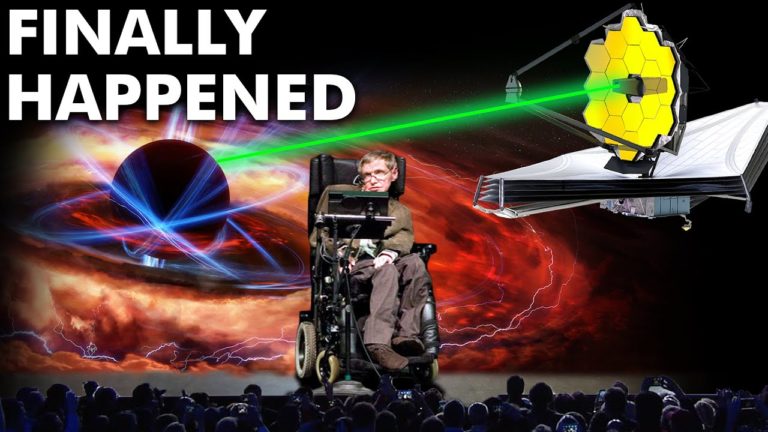James Webb Telescope Is FINALLY Proving Stephen Hawking’s Black Hole Theory!
Stephen Hawking was one of the greatest scientists of our time! Even though he is gone, his legacy leaves on in the world of astrophysics and science at large. As we approach the fourth anniversary of this legend’s death, the James Webb Space Telescope is about to prove yet one of Hawking’s theories, the Black Hole theory, right! What is Hawking’s Black Hole theory, why is it controversial, and how does the theory affect you personally?
We dive into how the new James Webb Telescope will finally prove Stephen Hawking Black Hole theory! Black holes are one of the most fascinating features in space, and they attract the attention of many astronomers! From their creation to their features, black holes are mesmerizing!
What are black holes anyway? A black hole is a region in space where the pulling force of gravity is so strong that light is not able to escape. Black holes have strong gravity forces because matter inside them has been pressed into a tiny space. Since no light can escape, you can’t see black holes, and neither can most telescopes! However, space telescopes with special instruments can help find black holes.
They can observe the behavior of materials and stars that are very close to black holes. Black holes can come in a range of sizes, but there are three main types of black holes. They are classified based on their mass and size. The smallest ones are known as primordial black holes. Scientists say this type of black hole is as small as a single atom but has the mass of a large mountain! The most common type of medium-sized black hole is called stellar.
The mass of a stellar black hole can be up to 20 times greater than the mass of the Sun and can fit inside a ball with a diameter of about 10 miles! You will find dozens of stellar-mass black holes within the Milky Way galaxy. The largest black holes are called supermassive. This type has masses greater than 1 million suns combined and would fit inside a ball with a diameter about the size of the solar system.
Every large galaxy contains a supermassive black hole at its center. The supermassive black hole at the center of the Milky Way galaxy is called Sagittarius A. It has a mass equal to about 4 million suns and would fit inside a ball with a diameter about the size of the Sun. How do black holes come about? Well, if we are talking about primordial black holes, those were formed in the early universe, soon after the Big Bang.
But stellar black holes form when the center of a very massive star collapses in upon itself. This collapse also causes a supernova, or an exploding star, that blasts part of the star into space. Scientists think supermassive black holes formed at the same time as the galaxy they are in.
The size of the supermassive black hole is related to the size and mass of the galaxy it is in. What happens when you are near a black hole? That might never happen because the closes black hole to us is far away enough that you will never get near it. New black holes are found all the time, but the currently closest one to us is about 1,500 light years away from us! It was nicknamed the Unicorn and is located in the Monoceros constellation.
However, imagine you somehow stray close enough to a black hole. It will pull you in, and lots of things will happen to you at the same time. You’re ultimately going to get torn apart by the extreme gravity! No material, especially fleshy human bodies, could survive intact.
So once you pass beyond the edge of the event horizon, you’re done. There’s no getting out. Even if you were still alive, you’d have to travel faster than the speed of light to escape, which is impossible! There is much to learn about black holes, including testing one of Stephen Hawking’s controversial theories on dark matter in the universe. However, before scientists can test Hawking’s theory, they need a powerful telescope that can see beyond all existing ones.
This is where the James Webb Space Telescope, JWST, comes in! Decades in the making and costing almost 10 billion dollars, the JWST eventually launched to space late last year.
The whole science world held its breath as the space telescope blasted off from French Guyana. It was so complicated that too much vibration during the launch would have caused damage and doomed the whole operation! Because of its massive size, the engineers had to fold it up in several places to fit into the launch rocket!
The reflecting mirror, made up of smaller hexagonal gold- plated mirrors, had to be folded. If not, the six-meter structure would not have fit into any existing rocket! The heat shield also had to be folded and is even more delicate while being large! It contains five layers that must be set to align perfectly, or the whole setup won’t work. Each of these layers, the size of a tennis court, is made from a special material.
Do not forget to share your opinion with us to provide you with the best posts !




0 Comments